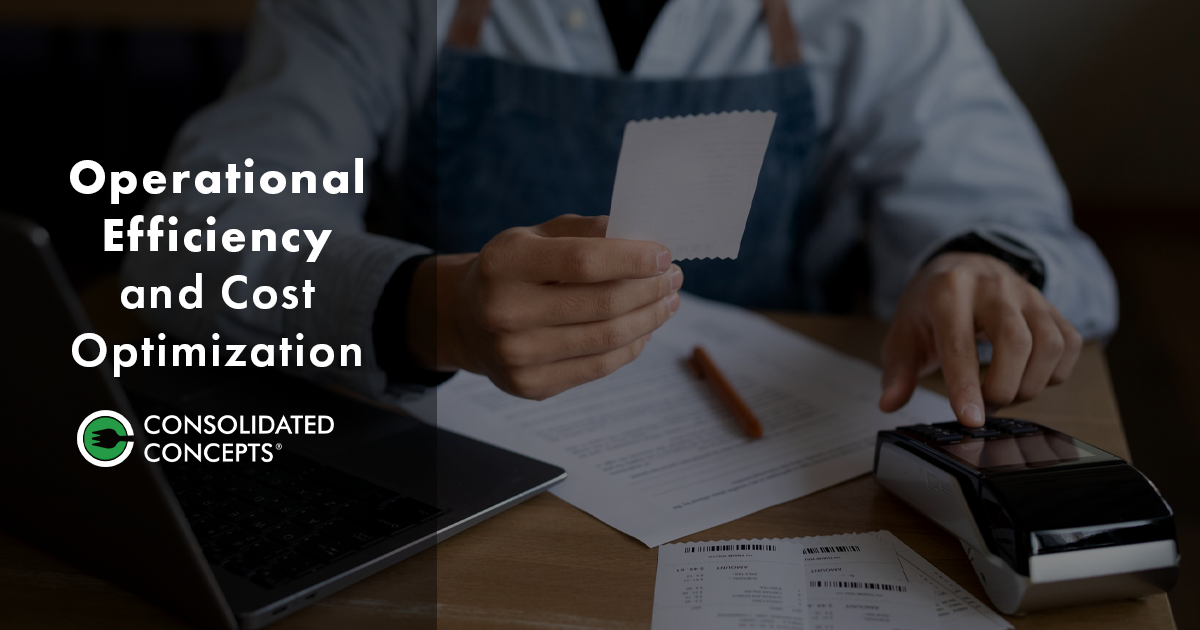4 Ways to Drive Operational Efficiency Across Multiple Locations
Staying ahead in the foodservice industry demands more than just culinary excellence. For multi-unit restaurant operators, achieving operational efficiency involves navigating the intricate web of supply chain management, data utilization, and performance monitoring.
What does operational efficiency mean?
Operational efficiency refers to the ability of an organization or business to optimize its processes, resources, and activities in order to achieve maximum output with minimal input. It involves streamlining and improving internal operations to enhance productivity, reduce waste, and increase overall effectiveness.
How do you measure operational efficiency?
Operational efficiency can be measured by factors such as:
- Cost-effectiveness
- Time Management
- Resource Utilization
- The ability to meet or exceed performance goals.
In the context of a multi-unit restaurant, operational efficiency might include optimizing supply chain processes, improving inventory management, ensuring consistent and standardized procedures, and leveraging technology to streamline various aspects of the business.
Ultimately, the goal is to run operations in a way that minimizes inefficiencies, maximizes output, and contributes to the overall success of the organization.

The challenge lies not only in understanding these complexities but also in implementing strategies consistently across all locations. Each location comes with its unique set of challenges, from varying customer preferences to distinct supplier networks.
Processes such as coordinating supply chain logistics, managing data analytics processes, and monitoring performance metrics all become exponentially more challenging when multiplied across different outlets.
Multi-unit restaurant operators often grapple with the difficulty of maintaining a cohesive strategy that aligns with the overarching goal of operational efficiency while adapting to the nuanced requirements of individual units.
Let’s discover four ways you can overcome these challenges, streamline operations, and foster a sense of unity and efficiency across your diverse portfolio of locations.
Centralized Data Management
Centralized Data Management stands as the bedrock for informed decision-making. Operating with an all-in-one tech stack is pivotal for streamlining data from various locations, offering a comprehensive view into areas such as spend management, back office operations, and inventory levels.
This approach eliminates the pitfalls of managing data from disparate sources, providing a unified platform for efficient analysis and optimization of operations. Navigating through data from multiple places introduces complexities that can impede swift decision-making. An all-in-one tech stack simplifies this process, ensuring seamless consolidation and analysis.
Technology-Enabled Supply Chain Optimization
Modern challenges demand modern solutions. The adoption of technology is pivotal for streamlining supply chain management and procurement processes. Benefits of leveraging supply chain management technology include:
- Streamlined Procurement
- Enhanced Visibility
- Efficient Inventory Management
- Seamless Sourcing
A sophisticated tech infrastructure serves as the linchpin, enhancing visibility and seamlessly connecting every link in the supply chain.
Standardized Processes and Best Practices
Consistency is key in the multi-unit restaurant business. Standardized processes and best practices not only enhance operational efficiency but also contribute to a cohesive brand identity. Crucial elements include:
- Quality Control
- Customer Experience
- Cost Management
- Brand Reputation
- Adherence to Regulatory Compliance
The adoption of standardized processes and best practices in multi-unit restaurant operations goes beyond efficiency; it shapes the very essence of the brand. From maintaining quality control to enhancing the customer experience, these elements are fundamental in creating a consistent and positive brand identity.
Continuous Performance Monitoring and Improvement
The journey towards operational excellence doesn’t end with implementation; it’s an ongoing process. By embracing feedback, analyzing metrics, and adapting strategies, restaurant operators can foster a culture of continuous improvement, ensuring sustained efficiency gains over time.
- Feedback Loops: Actively seek input for improvement.
- KPI Monitoring: Track customer satisfaction and inventory turnover for actionable insights.
- Agile Adaptation: Stay agile to meet evolving demands.
- Training and Skill Development: Invest in ongoing staff training for efficiency.
- Benchmarking Against Industry Standards: Regularly compare performance to industry standards.
Continuous performance monitoring and improvement are integral to multi-unit restaurant success. Fostering adaptability, learning, and refinement ensures establishments exceed customer expectations.

Achieving operational excellence is a constant pursuit. Consolidated Concepts stands as your strategic partner, offering a comprehensive suite of solutions designed to drive efficiency across key operational pillars.
- Centralized Data Management
- Technology-Enabled Supply Chain Optimization
- Standardized Processes and Best Practices
- Continuous Performance Monitoring and Improvement
Centralized Data Management
Consolidated Concepts provides a unified platform for aggregating data from various locations, offering operators valuable insights into purchasing patterns, inventory levels, and customer preferences. This centralized approach empowers operators to make informed decisions, optimize procurement, and streamline operations across their entire portfolio.
Technology-Enabled Supply Chain Optimization
Leveraging innovative technology, Consolidated Concepts streamlines procurement processes, enhances supply chain visibility, and ensures efficient inventory management. From predictive analytics to real-time tracking, our SaaS solutions enable operators to embrace modern supply chain technology, ultimately reducing costs and improving overall operational effectiveness.
Standardized Processes and Best Practices
Consolidated Concepts assists operators in establishing standardized procedures and best practices across locations, from food cost management to food safety. By offering insights into industry best practices, Consolidated Concepts helps operators create a cohesive brand identity, enhancing operational efficiency and ensuring a consistent experience for both staff and patrons.
Continuous Performance Monitoring and Improvement
Serving as a catalyst for a culture of continuous improvement, Consolidated Concepts provides tools for performance monitoring and analysis. Our technology facilitates feedback collection, monitors key performance indicators (KPIs), and supports agile adaptation to changing market dynamics. By benchmarking against industry standards and offering insights into areas for improvement, Consolidated Concepts helps operators drive sustained efficiency gains over time.
Consolidated Concepts serves as a comprehensive solution, addressing each aspect of operational efficiency.
Join Consolidated Concepts today for streamlined efficiency and elevate your business to new heights of success.










